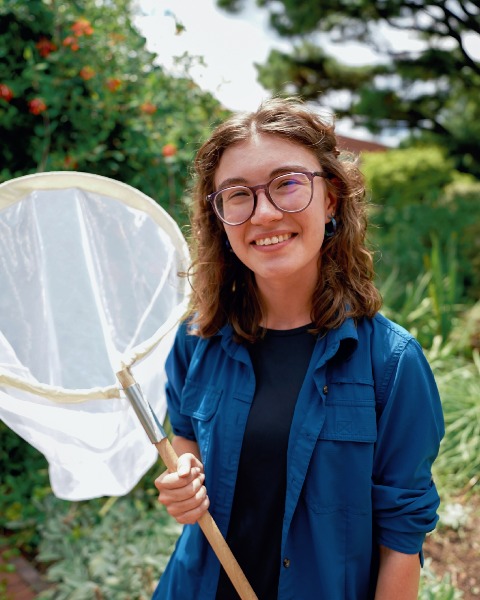Student 10-Minute Presentation
Plant-Insect Ecosystems
Student
Student Competition
Bees and thieves: Determining the network structure of a parasitoid-host system for cavity-nesting bees in Minnesota

Jenalyn Ann Ostendorf
Undergraduate Student
University of Minnesota
Rice, Minnesota
Matthew Petersen
Teaching Associate Profesor
University of Minnesota
Saint Paul, Minnesota
Presenting Author(s)
Co-Author(s)
While parasites may be harmful to the individuals, at a community level they can be a sign of a healthy system. In pollinator systems, the presence of parasites, including parasitoids and kleptoparasites, deliver top-down control that can promote a species-rich system by limiting the dominance of abundant species. Increased richness can promote greater stability and redundancy in pollinators which can increase pollination activity. In this study, we examine the community structure of kleptoparasitic Cuckoo wasp (Hymenoptera: Chrysididae) in Minnesota. Using bycatch from the MN Bee Atlas Project, we examine their host associations with cavity nesting bee populations by tracking emergence from bee blocks positioned around the state from 2016-2022. We utilized morphological and molecular identifications to document the 11 species of cuckoo wasps based on 253 specimens. By monitoring common emergence from block holes, we associated 71 cuckoo wasp - host relationships. A network analysis of the chrysidid-host parasitoid network identified a tight modular relationship between cuckoo wasps and the host feeding ecology. Four modules were recovered from the network analysis identified by the host feeding diets pollen, aphid, spider, and insect larvae. Our results provided evidence that there is a highly modular relationship between Chrysura pacifica and the genus Osmia. Understanding the networks that have healthy assemblages of pollinator-parasite ratios can provide a framework on how to recreate an abundant and species-rich pollinator-parasite community.

.png)

